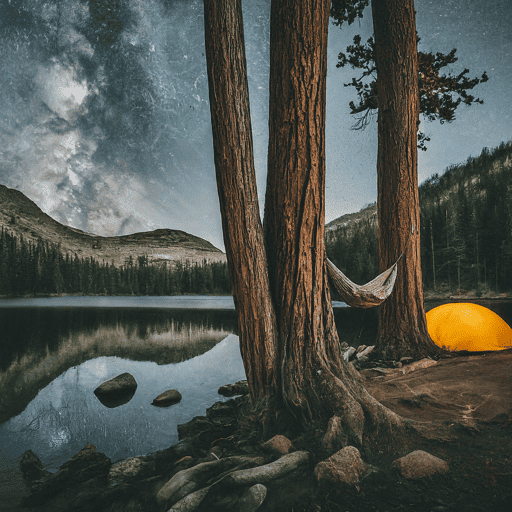Dispersed camping (camping outside designated campgrounds on public lands) offers a unique opportunity to immerse yourself in nature away from the crowds. In today’s digital age, many tools are available to help outdoor enthusiasts plan and execute their dispersed camping adventures with greater ease and safety. This guide will explore the various digital resources that can enhance your wilderness experience while maintaining the spirit of off-grid exploration.
Essential Digital Mapping Tools
When it comes to finding the perfect dispersed camping spot, digital mapping tools are indispensable. Here are some top contenders:
onX Offroad and onX Hunt: These apps provide detailed maps with land ownership information, making it easy to identify public lands suitable for dispersed camping. They offer features like offline maps, custom waypoints, and tracking capabilities.
Gaia GPS: A favorite among hikers and campers, Gaia GPS offers a wide range of map layers, including topographic maps, satellite imagery, and public land boundaries. Its route planning and tracking features are handy for dispersed camping trips.
US Public Lands app: This simple yet effective app clearly shows boundaries of public lands helping campers ensure they’re camping in legal areas.
Each tool has its strengths, and the choice often comes down to personal preference and specific needs. While some offer free versions, premium subscriptions typically provide more detailed maps and advanced features.
Campsite Finding Apps
Several apps specialize in helping campers find dispersed camping spots:
The Dyrt: While known for its extensive database of established campgrounds, The Dyrt also includes information on dispersed camping areas. User reviews and photos can be particularly helpful.
iOverlander: This community-driven app is a goldmine for finding off-the-beaten-path camping spots, including many dispersed camping areas.
These apps can be excellent starting points for finding the best dispersed camping spots, but always cross-reference with official sources and be prepared to scout locations in person.
Weather Forecasting Tools
Accurate weather information is crucial for dispersed camping. Consider using:
Windy: Provides interactive weather maps with various data layers, helpful in understanding wind patterns and potential storm movements.
Remember that weather in remote areas can be unpredictable, so always be prepared for various conditions.
Navigation and Offline Maps
Reliable navigation is essential when venturing into remote areas:
Google Maps offline functionality: Allow you to download maps for offline use, which can be a lifesaver in areas without cell service.
Avenza Maps: Enables you to import custom maps, including detailed USGS topographic maps, for offline use.
Always have a physical map and compass as a backup, and know how to use them.
Land Management Agency Resources
Official resources from land management agencies are invaluable:
Recreation.gov mobile app: Offers information on public lands and some dispersed camping areas.
Bureau of Land Management (BLM) website: Provides interactive maps and information on dispersed camping regulations on BLM land.
US Forest Service (USFS) digital resources: Offers Motor Vehicle Use Maps (MVUMs) which show roads where dispersed camping is allowed in National Forests.
Safety and Emergency Tools
Safety should always be a top priority in dispersed camping:
What3Words: A unique system that can pinpoint any location on Earth with just three words, helpful in sharing precise locations with emergency services.
Garmin inReach or SPOT devices: Offer satellite communication and SOS capabilities in areas without cell service.
First Aid apps: Apps like those from the Red Cross can provide valuable guidance in emergencies.
Digital Journaling and Photography
Capture and share your adventures:
Day One app: A popular journaling app that allows you to combine text, photos, and location data.
Snapseed or VSCO: Powerful photo editing apps to enhance your camping photos.
AllTrails or Strava: Track and share your hiking or biking routes during your camping trip.
Integrating Digital Tools with Traditional Methods
While digital tools can greatly enhance your dispersed camping experience, it’s important to use them mindfully:
- Always have paper maps as a backup.
- Use technology to enhance, not replace, outdoor skills.
- Teach companions how to use digital tools for safety.
Remember to check out the ultimate checklist for dispersed camping gear to ensure you’re fully prepared for your tech-savvy wilderness adventure.
Conclusion
Digital tools have revolutionized how we plan and execute dispersed camping trips, offering unprecedented access to information and safety features. However, it’s crucial to balance technology use with the essence of wilderness experience. Use these tools to enhance your adventure, but don’t forget to disconnect and immerse yourself in the natural world around you. Happy camping!

Leave a Reply